What is the Heartworm Life Cycle in Dogs? 4 Stages of it
Understanding the life cycle of heartworm and its four stages in dogs is vital for any pet owner. The infection begins with a mosquito bite, where larvae enter your dog’s bloodstream. Regular vet visits are crucial at this stage. As the disease progresses, mild symptoms like a persistent cough and reduced energy levels appear. Moderate disease brings more serious issues, including significant heart and lung damage. In the severe stage, your dog faces life-threatening complications such as extreme fatigue and organ damage.
Here are detailed descriptions of the heartworm life cycle and its four stages.

What is The Life Cycle of The Heartworm?
The life cycle of the heartworm (Dirofilaria immitis) is a complex process involving both mosquitoes and mammalian hosts, primarily dogs. Here’s a detailed overview of the heartworm life cycle:
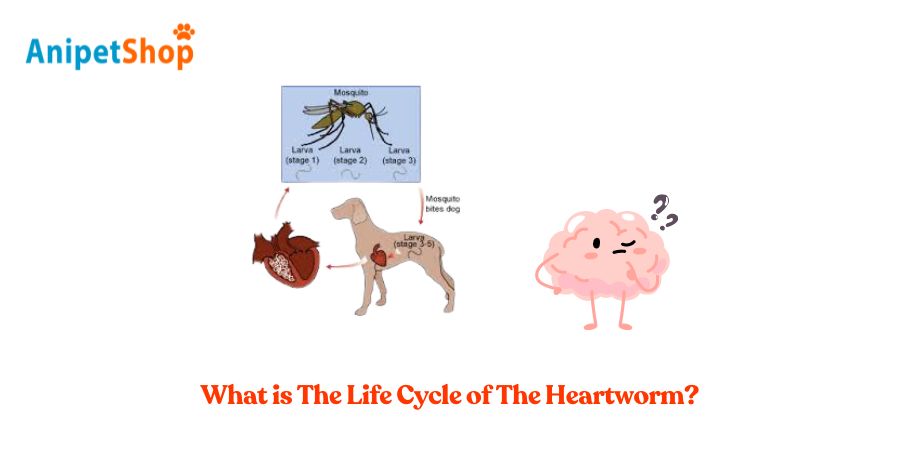
1. Mosquito Ingests Microfilariae
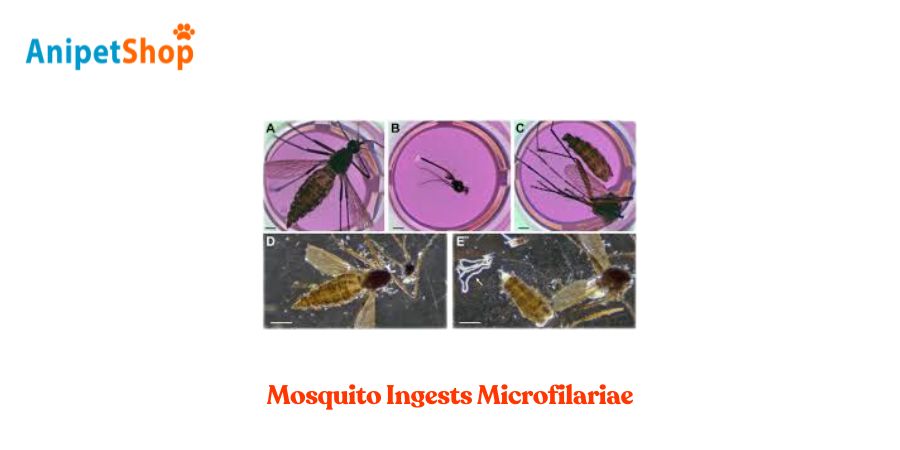
The first stage begins when a female mosquito, typically of the Culex, Aedes, or Anopheles species, bites a dog already infected with heartworms. During this blood meal, the mosquito ingests microscopic stage 1 larvae, known as microfilariae. These microfilariae are approximately 0.3mm in size and circulate in the infected dog’s bloodstream, ready to be picked up by the feeding mosquito.
2. Larvae develop in Mosquito (10-14 days)
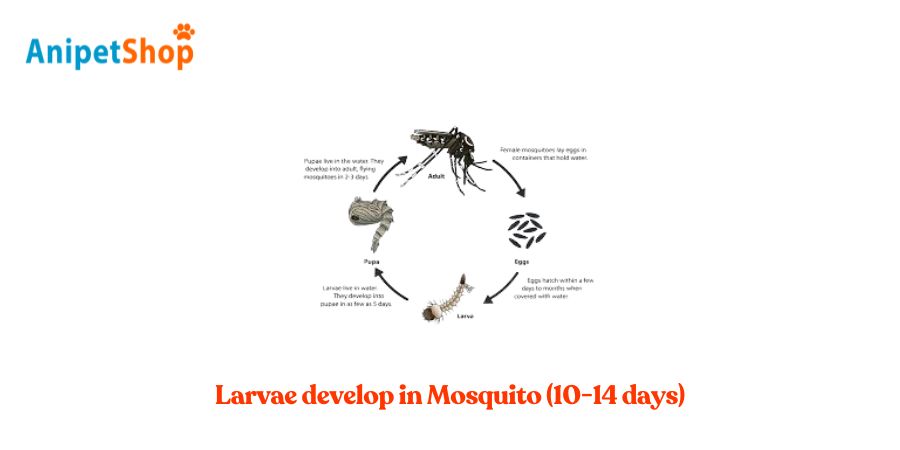
The second stage involves the development of the larvae within the mosquito, a process that typically takes 10-14 days. Within 24-48 hours of ingestion, the microfilariae (L1) migrate from the mosquito’s midgut to its Malpighian tubules. Over the next 1-7 days, the L1 larvae develop into the L2 stage, becoming sausage-shaped. The L2 larvae then continue to grow for 9-10 days, developing a tail and a more defined digestive system. Finally, they transform into infective L3 larvae and move to the mosquito’s head and proboscis. This development process is highly dependent on environmental conditions, with optimal progress occurring at temperatures between 70-90°F (21-32°C) and high humidity.
3. Mosquito Transmits L3 Larvae to New Host
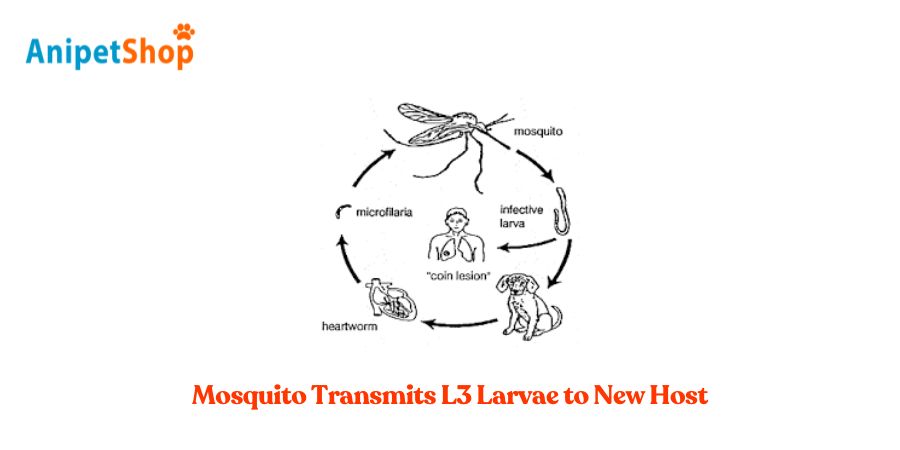
The third stage occurs when the infected mosquito, now carrying the infective L3 larvae, bites a new dog. During this blood meal, the L3 larvae are deposited on the dog’s skin and enter the body through the bite wound. This marks the beginning of the heartworm’s life cycle within a new host.
4. Larvae develop in Dog’s Body (2-3 months)

The fourth stage involves the development of the larvae within the dog’s body, a process that takes approximately 2-3 months. The L3 larvae initially migrate through the dog’s skin and muscles. After about a week, they molt into L4 larvae, which continue to develop within the subcutaneous tissue and muscles. Around 50 days later, the L4 larvae molt again into L5 larvae, also known as immature adult heartworms.
5. Heartworms Mature and Reproduce (5-7 months)

The final stage of the cycle involves the maturation of heartworms and their reproduction, occurring over 5-7 months. The immature adult heartworms (L5) migrate to the dog’s heart and the surrounding large blood vessels, where they mature into adult heartworms. Adult females can grow up to 30cm long, while males reach about 23cm. Once mature, the heartworms mate and females begin producing microfilariae about 6-7 months after the initial infection. These new microfilariae then circulate in the dog’s bloodstream, ready to infect other mosquitoes and continue the cycle.
This entire cycle, from the initial mosquito bite to the production of new microfilariae, takes approximately 6-7 months. Understanding this intricate life cycle is crucial for developing effective prevention strategies and treatments for heartworm disease in pets.
What are the 4 Stages of Heartworm in Dogs?
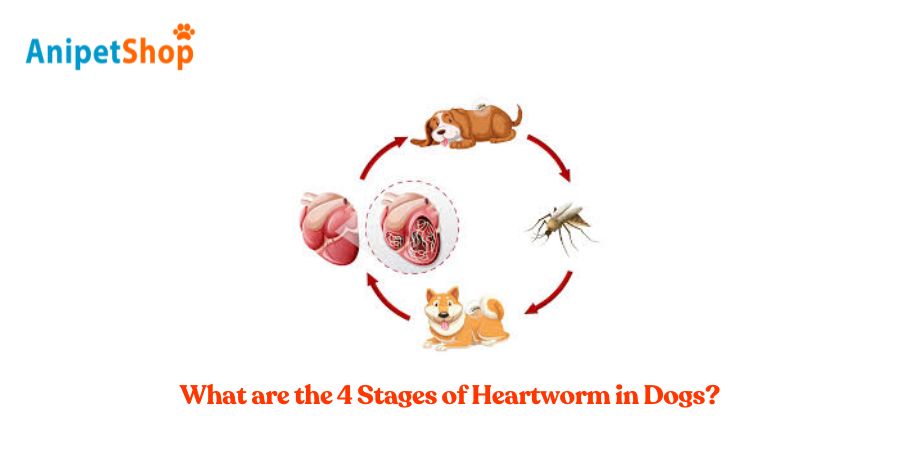
Stage 1: Early Infection
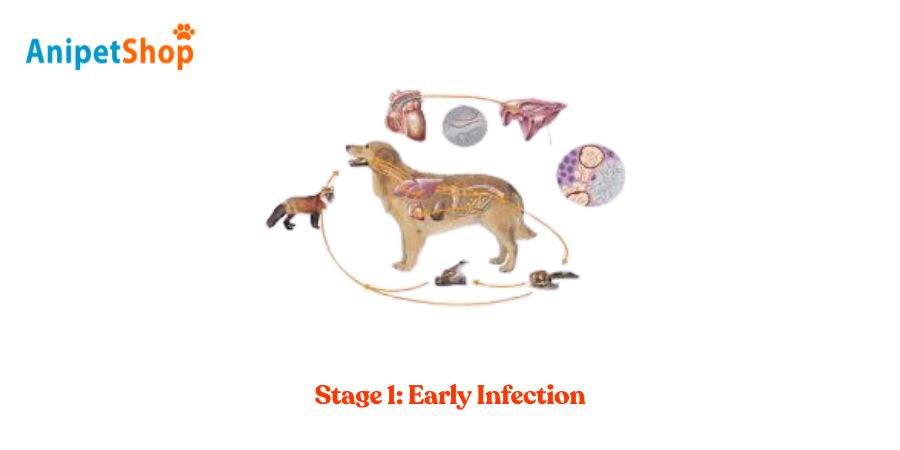
In the early stages of heartworm infection, your dog may not show any noticeable symptoms. This stage, known as the initial infection stage, can be particularly deceptive. The heartworm larvae, called microfilariae, enter your dog’s bloodstream through a mosquito bite. Once inside, these larvae start their journey to the heart and lungs.
During this stage, it’s vital to remain vigilant even if your dog seems perfectly healthy. Regular vet check-ups are essential for detecting these hidden threats early on. Blood tests can reveal the presence of microfilariae before they mature into adult heartworms.
Early detection can make a significant difference in treatment success and your dog’s overall health. It’s important to maintain your dog’s heartworm prevention regimen. Monthly preventative medications can effectively kill the larvae before they develop into more dangerous stages.
Missing even one dose can put your dog at risk of infection. Remember, just because you don’t see immediate symptoms doesn’t mean your dog is in the clear.
Stage 2: Mild Disease

As heartworm larvae mature into young adult worms, your dog may start to exhibit mild symptoms, marking the progression into Stage 2: Mild Disease. At this stage, your dog might experience subtle signs that can easily be overlooked. You could notice a slight but persistent cough, especially after exercise. Your dog may also show a decrease in energy levels, seeming more tired than usual after regular activities.
During Stage 2, the young adult worms begin to occupy your dog’s pulmonary arteries, causing mild inflammation and reduced blood flow. This can lead to exercise intolerance, where your dog mightn’t be able to handle physical activities it previously enjoyed. You may also observe a slight decrease in appetite, though it’s often not significant enough to cause immediate concern.
It’s vital to pay attention to these early signs, as catching heartworm disease in its milder stages can make a significant difference in treatment success.
If you suspect your dog might be in Stage 2, scheduling a vet appointment for a heartworm test is essential. Early detection and intervention can prevent the disease from progressing to more severe stages, safeguarding your dog’s health and well-being.
Stage 3: Moderate Disease
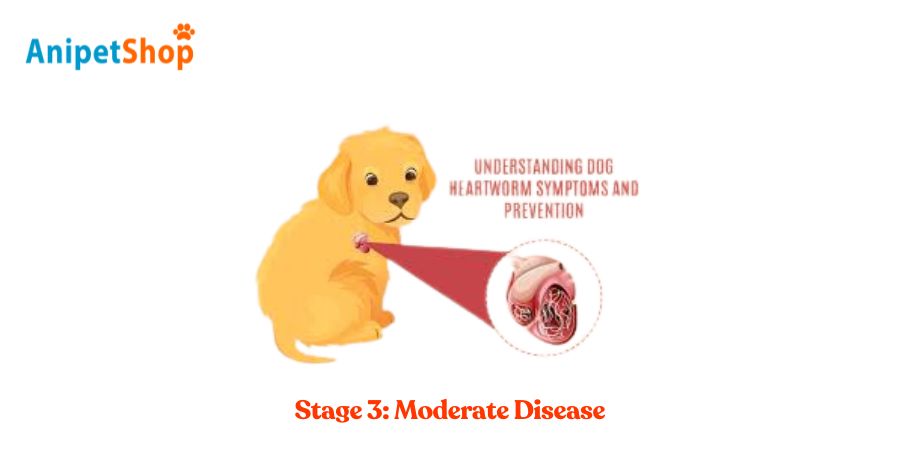
When heartworm disease progresses to Stage 3: Moderate Disease, your dog will likely exhibit more noticeable and concerning symptoms. At this stage, the heartworms are causing significant damage to your dog’s heart and lungs. Your dog’s cough will become more persistent and severe, often being accompanied by fatigue and exercise intolerance.
You might notice that your dog gets tired quickly during walks or playtime and may even show reluctance to participate in physical activities they once enjoyed. Additionally, your dog could start experiencing difficulty breathing, which can be quite critical. You may observe rapid or labored breathing even when your dog is at rest.
Weight loss and a decrease in appetite are also common as the disease progresses. Some dogs might develop a swollen belly due to fluid accumulation, a condition known as ascites. This occurs because the heart is struggling to pump blood efficiently, leading to fluid buildup in the abdomen.
Recognizing these symptoms early is essential. If you suspect your dog is in Stage 3 of heartworm disease, consult your veterinarian immediately. Early intervention can prevent the situation from worsening and improve your dog’s chances of recovery.
Stage 4: Severe Disease
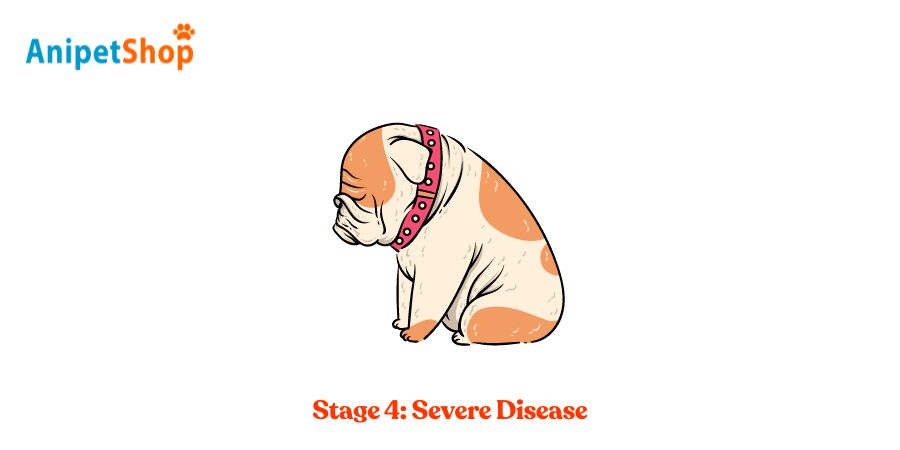
Severe Disease marks the most critical phase of heartworm infection, where your dog faces life-threatening complications. At this point, the heartworms have multiplied substantially, causing severe damage to your dog’s heart, lungs, liver, and kidneys. The sheer number of worms can block blood flow, leading to congestive heart failure. Your dog will likely show extreme fatigue, fainting, and an inability to exercise without collapsing.
You might also notice a persistent cough, difficulty breathing, and fluid accumulation in the abdomen (ascites). These symptoms are clear indicators that your dog’s body is under immense stress. Additionally, the worms release toxins when they die, which can cause further complications, such as pulmonary embolisms.
In this stage, your dog’s quality of life is drastically reduced. They may experience notable weight loss, anemia, and jaundice due to liver damage. Immediate veterinary intervention is crucial to manage these severe symptoms and prevent further organ damage.
While it’s a challenging and heartbreaking situation, recognizing these signs early can make a significant difference. Remember, the sooner you get your dog evaluated by a vet, the better their chances of surviving this severe stage.
Lily Watson is an author specializing in veterinary care in Australia. With a profound passion for animal welfare and a solid foundation in veterinary science, Lily has dedicated herself to disseminating valuable knowledge and information for both pet owners and professionals in this field.

